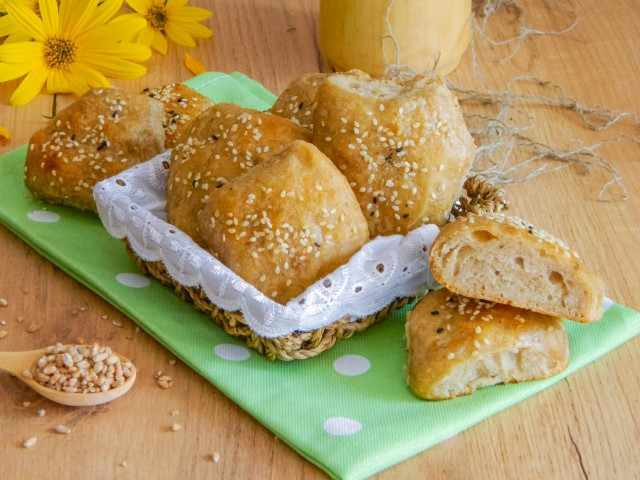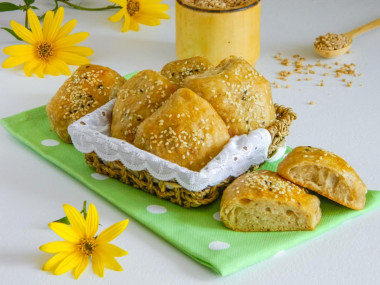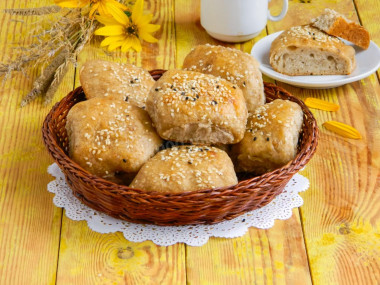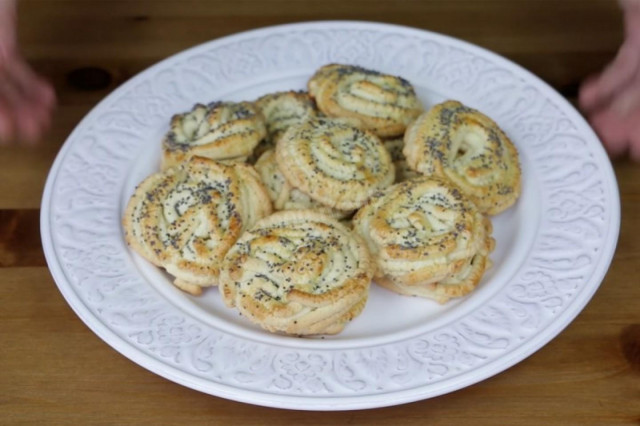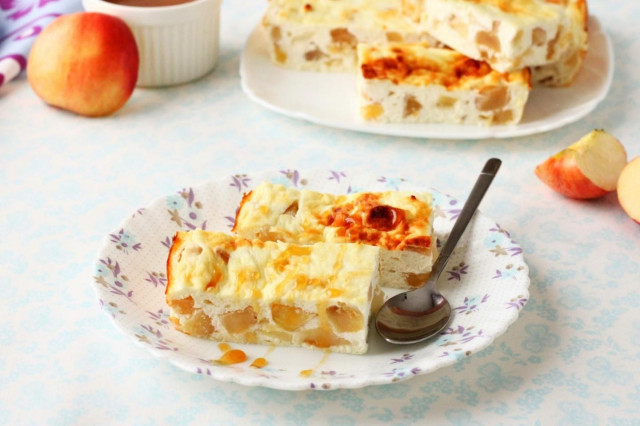Composition / ingredients
Step-by-step cooking
Step 1:
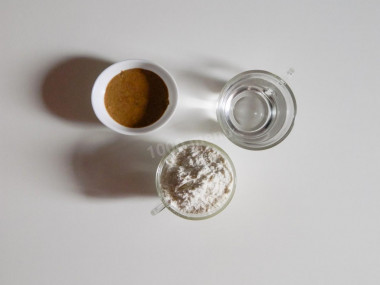
How to make buns? Any starter culture with a humidity of 100% is suitable. I have rye. It must be pre-prepared according to the recipe indicated on the package. Take wheat flour of the highest or first grade. To begin with, put the sourdough. To do this, take a starter, 80 grams of wheat flour and 80 ml of water at room temperature.
Step 2:
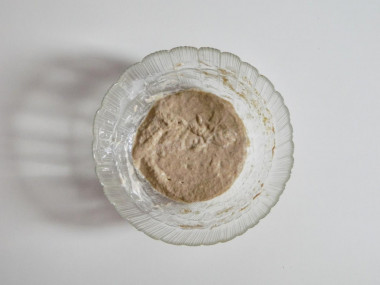
Transfer flour, sourdough and water to a deep bowl. Mix everything until smooth, cover with a towel and leave the dough to ripen for at least 5 hours at room temperature.
Step 3:
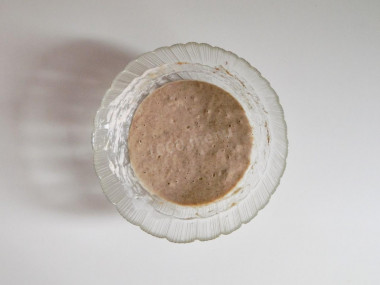
The ripening time of the sourdough depends on the properties of the starter, so check the readiness by appearance. Bubbles should appear on the surface of the sponge. If in doubt, do the following test: take a little sourdough with a spoon and put it in a container with water. If the sponge does not sink and floats on the surface, then it is ready.
Step 4:
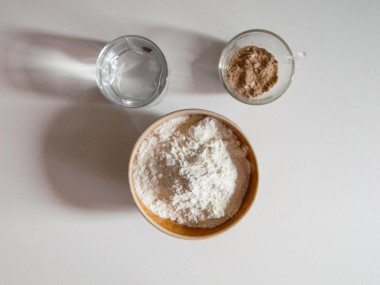
When the dough is ready, proceed to kneading the dough. Prepare the remaining water and flour. Sift the flour to make the dough more airy.
Step 5:
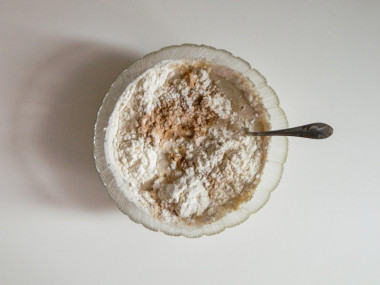
Add water and whole grain flour to the sourdough, mix until smooth. Add wheat flour in small portions until you achieve the desired consistency.
Step 6:
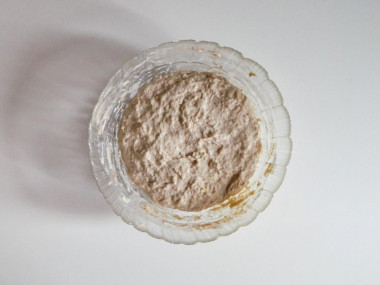
The dough should be moist enough. Add flour until it becomes difficult to knead with a spoon. Cover the dough and leave for half an hour. During this time, the gluten will disperse and it will become easier to work with the dough.
Step 7:
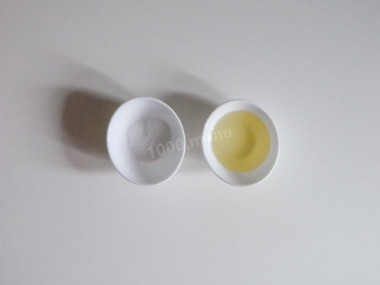
To make the dough rich, you will need salt and vegetable oil.
Step 8:
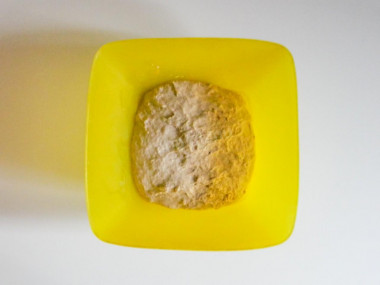
Lubricate your hands and work surface or bowl with vegetable oil and adding a little salt and oil, knead the dough with your hands. Leave some oil to lubricate your hands. Cover the dough and leave for about 2.5 hours.
Step 9:
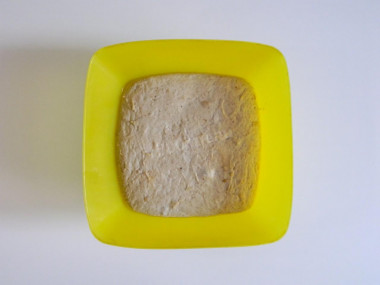
When the dough increases in volume, proceed to the formation of buns.
Step 10:
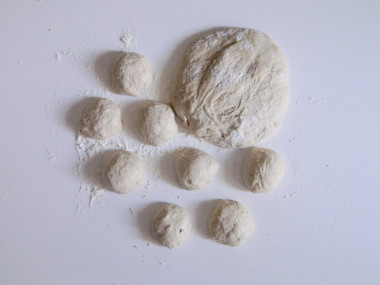
Transfer the dough to a work surface greased with oil or sprinkled with flour. Divide it into 10-12 identical parts. Form the dough into balls, cover them with cling film and leave to come up for 20 minutes.
Step 11:
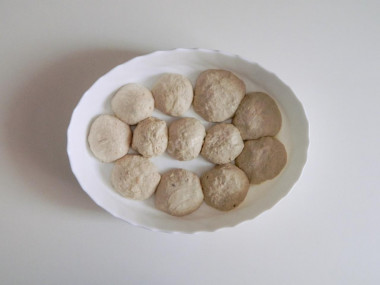
Transfer the prepared balls to a baking dish at a small distance from each other. I took an oval shape of 30x20 cm.
Step 12:
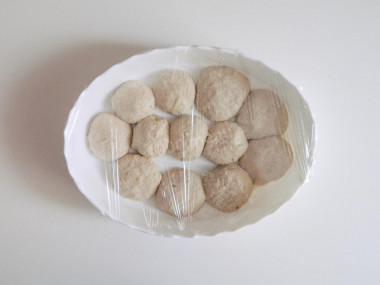
Cover them with cling film and leave them to come up for another 1.5 hours.
Step 13:
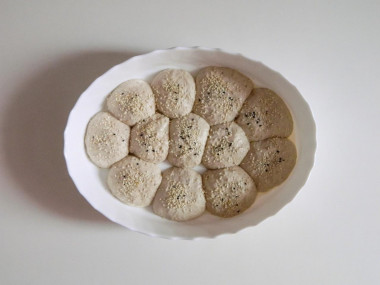
When the buns come up, sprinkle them with sesame seeds and put them on the middle shelf of a preheated 220 degree oven. In order for the oven to have time to heat up to the desired temperature, turn it on in advance (20 minutes before baking). After 15 minutes, reduce the temperature to 200 degrees and bake for about 15 minutes more. The exact time depends on the capabilities of your oven. Remove the finished buns from the mold, cover with a towel and cool.
Keep in mind that everyone's ovens are different. The temperature and cooking time may differ from those specified in the recipe. To make any baked dish successful, use useful information about the features of ovens !
Any heat-resistant form is suitable for this recipe. If you use a silicone mold, then you do not need to smear it with butter or margarine. But it is better to lightly lubricate metal, ceramic or glass dishes with vegetable oil so that the baking does not burn.
Make it a rule that the amount of flour is never determined in advance when preparing flour and bread products! This indicator will always fluctuate, since flour can be of different humidity, differ in the degree of grinding and the level of gluten, and other indicators, which inevitably affects its ability to bind to the liquid mixture in the dough. Since it is impossible to do a laboratory test at home to determine all the parameters and indicators of flour, we recommend acting on the principle of "flour in water", that is, take liquids exactly according to the recipe, and add flour to the liquid component not all at once, but in parts, achieving the desired consistency (while flour may take a little more or on the contrary, less than in the recipe). Thanks to this technique, the proportions of the ingredients are more accurately preserved and the quality of the dough is not lost.
Caloric content of the products possible in the composition of the dish
- Vegetable oil - 873 kcal/100g
- Dried whole sesame seeds - 563 kcal/100g
- Shelled sesame seed - 582 kcal/100g
- Salt - 0 kcal/100g
- Water - 0 kcal/100g
- Wheat flour - 325 kcal/100g
- Sourdough - 29 kcal/100g
- Whole wheat flour - 298 kcal/100g

